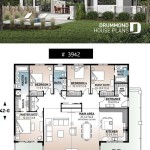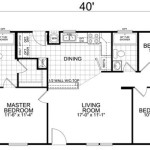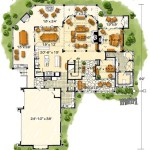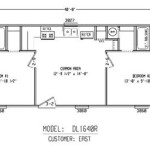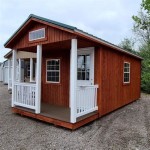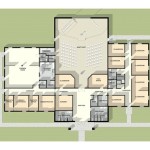House Plans: 1000 to 1200 Square Feet
The selection of a house plan is a pivotal decision in the home-building process. Size, layout, and features must align with individual needs, lifestyles, and budgets. House plans ranging from 1000 to 1200 square feet represent a practical option for individuals, couples, or small families seeking a comfortable and manageable living space. These plans offer a balance between affordability and functionality, making them suitable for various locations and construction styles. This article explores the considerations, advantages, and design possibilities associated with house plans within this square footage range.
The square footage of a home significantly influences its overall cost, both for construction and long-term maintenance. A 1000 to 1200 square foot house generally requires fewer materials, less labor, and smaller land parcels than larger dwellings, resulting in lower upfront expenses. Furthermore, utility bills, property taxes, and insurance premiums are typically lower for smaller homes, contributing to long-term financial savings. This makes house plans within this size range particularly appealing to first-time homebuyers, retirees, or individuals prioritizing financial prudence.
Beyond cost considerations, smaller homes often promote a more sustainable lifestyle. Reduced energy consumption for heating and cooling, coupled with lower water usage, translates to a smaller environmental footprint. In addition, the manageable size of the property encourages efficient use of resources and simplifies maintenance tasks. This is an increasingly important factor for environmentally conscious individuals and communities.
House plans in the 1000 to 1200 square foot range can be incredibly versatile, accommodating a variety of architectural styles and interior layouts. Whether opting for a traditional ranch-style home, a modern minimalist design, or a cozy cottage retreat, the possibilities are extensive. The key lies in careful planning and efficient space utilization to maximize functionality and comfort within the available square footage.
Maximizing Space and Functionality
One of the primary challenges in designing a smaller home is to optimize space utilization. Every square foot must be carefully considered to ensure that it contributes to the overall functionality and comfort of the living environment. Strategies for maximizing space include open floor plans, multi-functional rooms, and strategic storage solutions.
Open floor plans, which combine living, dining, and kitchen areas into a single unified space, create a sense of spaciousness and improve flow. This layout eliminates unnecessary walls and hallways, maximizing the usable floor area. Furniture arrangements can then define distinct zones within the open space, allowing for flexibility and adaptability.
Multi-functional rooms can serve multiple purposes, further enhancing space efficiency. A guest bedroom that doubles as a home office, or a living room that converts into a play area, are examples of this approach. Convertible furniture, such as sofa beds and folding tables, can add versatility to these spaces, allowing them to adapt to different needs at different times.
Strategic storage solutions are essential for maintaining a clutter-free and organized living environment in a smaller home. Built-in shelving, under-bed storage, and vertical storage solutions are all effective ways to maximize storage space without compromising floor area. Closets should be carefully designed to accommodate a variety of items, and unused spaces, such as under stairs, can be repurposed for storage.
The incorporation of natural light also plays a crucial role in maximizing the perceived space of a smaller home. Large windows and skylights can brighten the interior and create a more airy and expansive feel. Strategically placed mirrors can further enhance the effect by reflecting light and creating the illusion of greater depth. Lighting design should also be carefully considered, with recessed lighting and strategically placed lamps contributing to a well-lit and visually appealing environment.
Outdoor living spaces, such as patios, decks, or porches, can extend the living area of a smaller home and provide additional space for relaxation and entertainment. These spaces can be seamlessly integrated with the interior through sliding glass doors or French doors, creating a smooth transition between indoor and outdoor living areas. Landscaping can further enhance the appeal of outdoor living spaces, creating a private and inviting retreat.
Design Considerations for Small House Plans
Several design considerations are particularly important when planning a house in the 1000 to 1200 square foot range. These include the layout of the rooms, the selection of materials, and the overall architectural style of the home.
The layout of the rooms should be carefully considered to ensure that the available space is used efficiently and effectively. The placement of the kitchen, bathrooms, and bedrooms should be strategic, taking into account factors such as natural light, privacy, and accessibility. A well-designed layout will create a comfortable and functional living environment that meets the specific needs of the occupants.
The selection of materials can also have a significant impact on the overall look and feel of a smaller home. Light-colored walls and flooring can create a sense of spaciousness, while darker colors can make a room feel smaller and more intimate. Durable and low-maintenance materials are particularly important in high-traffic areas, such as the kitchen and bathrooms. Sustainable and eco-friendly materials can also be incorporated into the design to reduce the environmental impact of the home.
The architectural style of the home should be consistent with the surrounding environment and reflect the personal preferences of the homeowner. Whether opting for a traditional, contemporary, or eclectic style, the design should be cohesive and well-proportioned. Exterior features, such as windows, doors, and roofing materials, should be carefully selected to complement the overall architectural style of the home.
Accessibility is another crucial consideration, particularly for individuals with mobility limitations. Universal design principles can be incorporated into the design to ensure that the home is accessible to people of all ages and abilities. This may include features such as wider doorways, grab bars in bathrooms, and ramps instead of stairs.
Benefits of Smaller House Plans
Choosing a house plan in the 1000 to 1200 square foot range offers numerous benefits, including cost savings, reduced environmental impact, and ease of maintenance. These advantages make smaller homes an appealing option for a wide range of individuals and families.
The cost savings associated with smaller homes are significant, both in terms of upfront construction expenses and long-term operating costs. Lower material costs, reduced labor expenses, and smaller land parcels contribute to lower initial construction costs. Reduced utility bills, property taxes, and insurance premiums translate to long-term financial savings.
The reduced environmental impact of smaller homes is another significant benefit. Lower energy consumption for heating and cooling, coupled with lower water usage, results in a smaller carbon footprint. The manageable size of the property encourages efficient use of resources and simplifies maintenance tasks, further reducing the environmental impact of the home.
The ease of maintenance associated with smaller homes is also a significant advantage. Less square footage translates to less cleaning, less landscaping, and fewer repairs. This can free up time for other activities and reduce the stress associated with homeownership.
Smaller homes can also foster a sense of community and promote a simpler lifestyle. The reduced space encourages residents to spend more time outdoors and interact with their neighbors. The focus shifts from material possessions to experiences and relationships, leading to a more fulfilling and meaningful life.
In summary, house plans in the 1000 to 1200 square foot range offer a practical and appealing option for individuals, couples, or small families seeking a comfortable and manageable living space. By carefully considering the design considerations and maximizing space utilization, it is possible to create a functional, stylish, and sustainable home that meets the specific needs and preferences of the occupants.

Contemporary Floor Plan Main 45 428 Modular Home Plans House One Story 1200 Sq Ft

Gorgeous 1000 To 1200 Sq Ft N House Plans Completed Floor Plan With Des 2bhk Duplex

17 Elegant 1200 Sq Ft House Plans 2 Bedroom Pics Open Concept Layout 1200sq

Ranch Style House Plan 3 Beds 2 Baths 1200 Sq Ft 116 248 Houseplans Com

1000 Sq Ft House Plans 3 Bedroom Kerala Style Plan Ideas Simple Small Modern Duplex

10 Best 1200 Sq Ft House Plans As Per Vastu Shastra 2024 Styles At Life

Small Cabin Plans With Loft Under 1000 Square Feet Yahoo Image Search Results Cottage Style House 4 Bedroom

1200 Sq Ft House Plans Designed As Accessory Dwelling Units

Best Residential Design In 1200 Square Feet 60 Architect Org

1100 To 1200 Sq Ft House Plans 2bhk Plan Free Duplex


